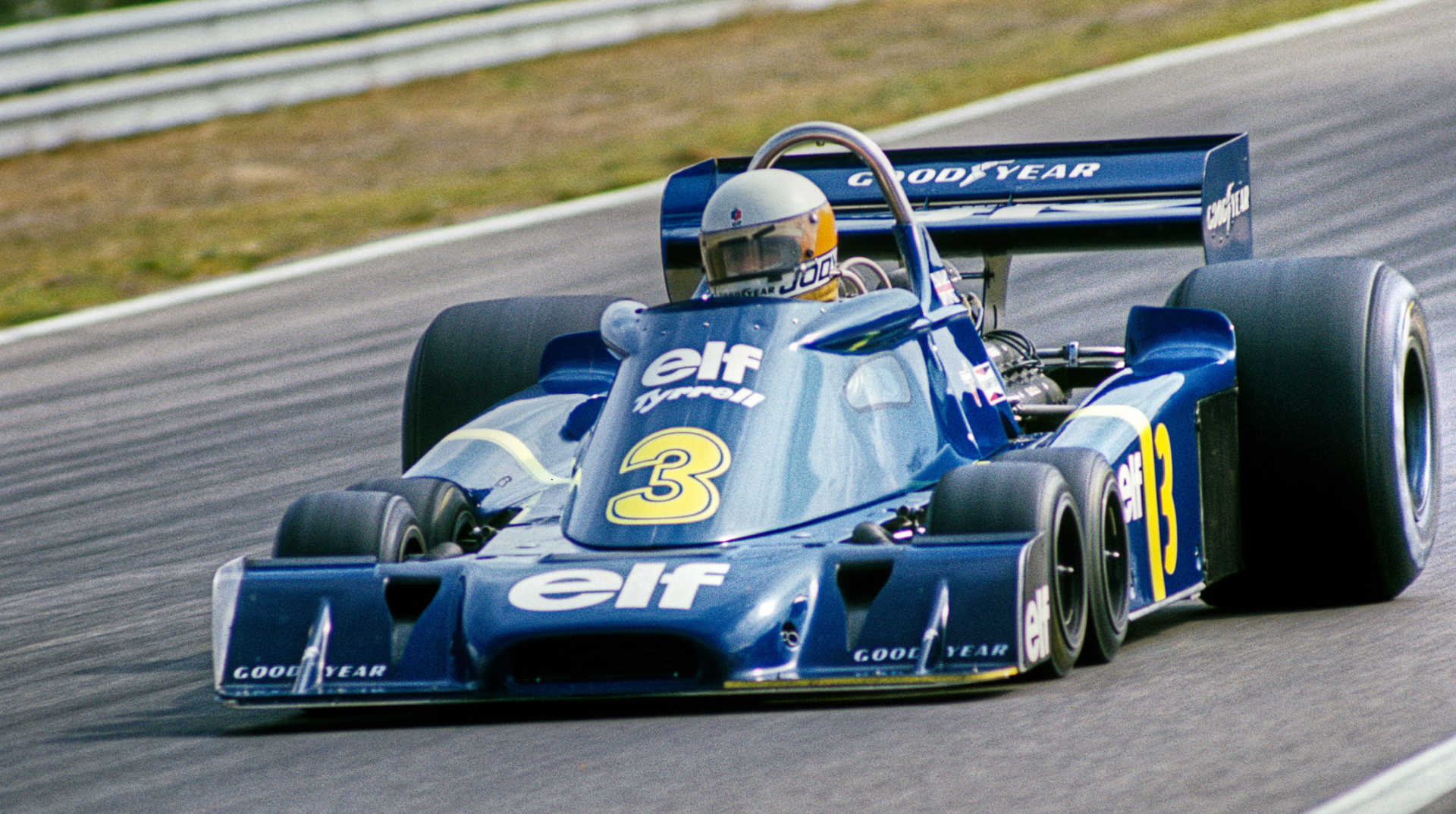“
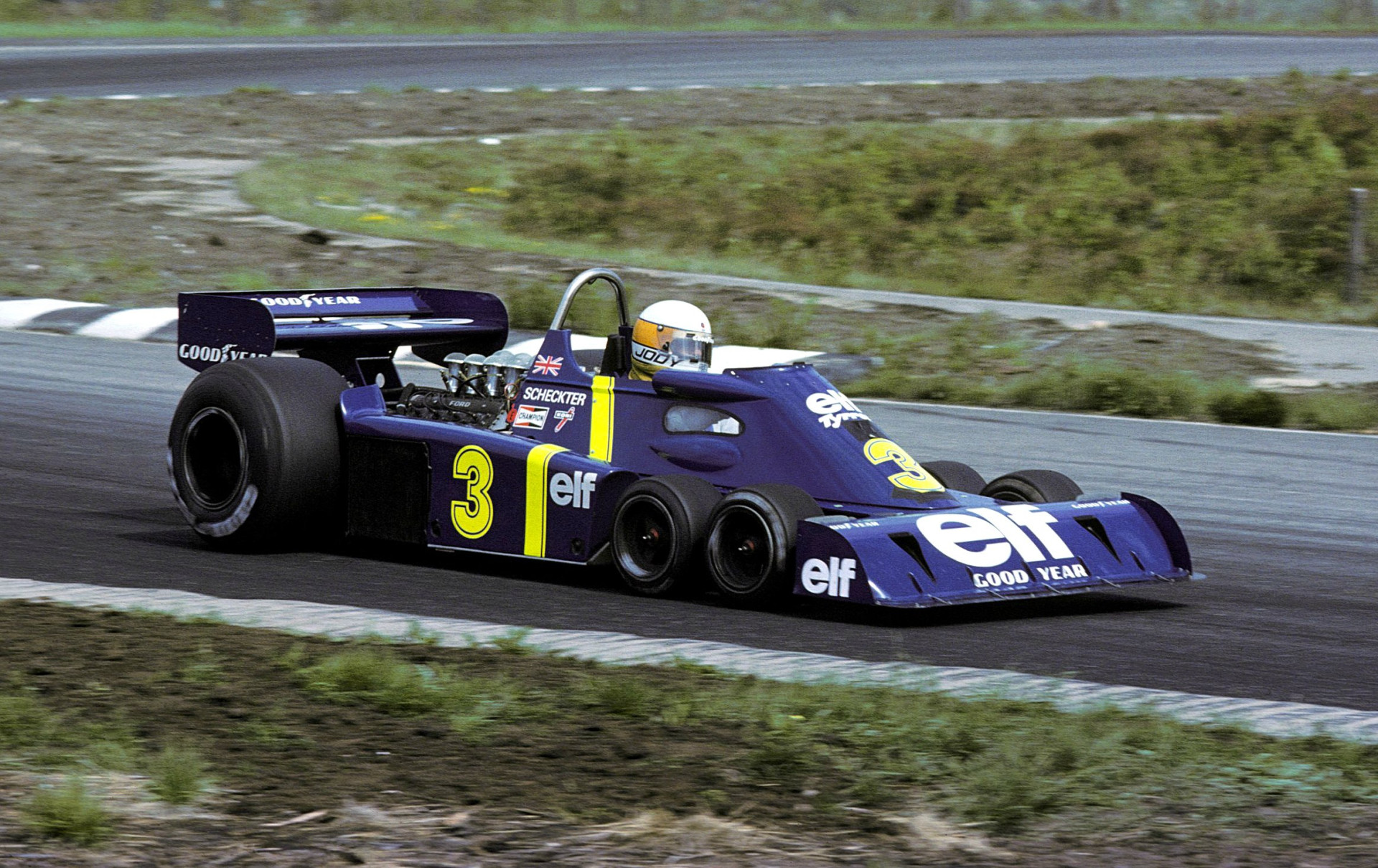 Jodi Shaketer at the wheel of Tyrrell P34 rushes to victory at the Sweden Grand Prix of 1976
Jodi Shaketer at the wheel of Tyrrell P34 rushes to victory at the Sweden Grand Prix of 1976
Formula-1 in social network X (previously Twitter)
Nowadays, the developers of the Formula-1 are squeezed within the framework of rigid technical regulations and more similar to lawyers, who first look for “gray zones” of the rules, and then prove the legality of their decisions.
However, in the past, engineers had creative freedom and design fantasy had a place to walk. One by one, unusual cars of formula-1 appeared on the starting grille. And only speed showed which one would create a story.
Prerequisites At the end of the 1973 season, Tirrell’s championship team was left without both pilots: the legendary Jackie Stuart, while at the peak of glory, unexpectedly made a decision to end his career, and his protege François Sever, who had high hopes, tragically died in the quality of the season.
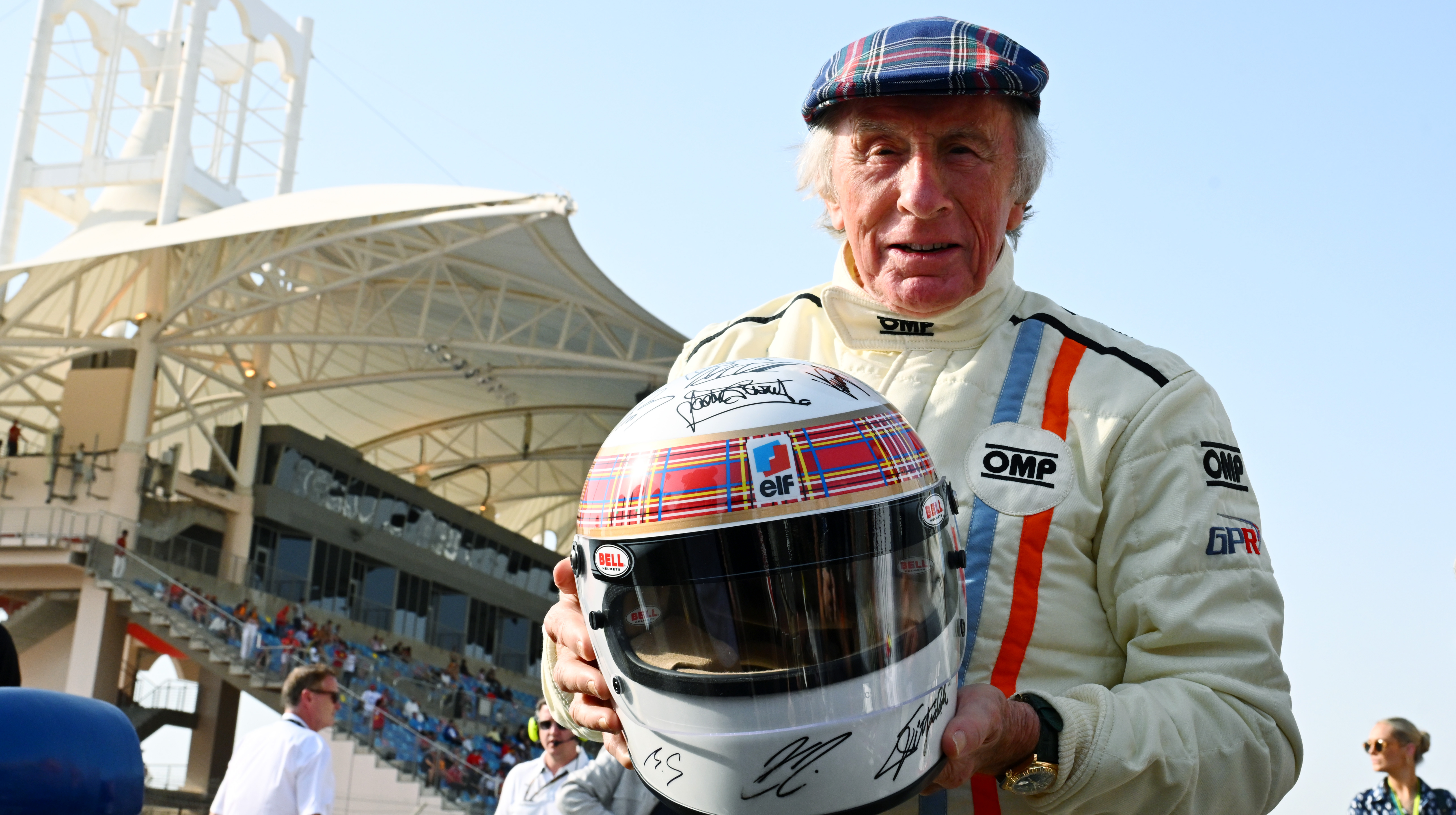
Ken Tirrell was forced to seek replacement immediately to two leaders. New pilots were Jodi Shekeke and Patrick Depayier, and Jodi soon took a leadership position. But the team, which was almost like a family, took time to get used to new faces.
The 1974 season held the team at the “acceptable” level – Shekter even claimed the title for a while. However, as early as 1975, the results worsened sharply: despite one victory, Jodi scored only 20 points and took the seventh place in his personal standings – too little for the team with the championship past.
Against the backdrop of a sports recession began to go and sponsors. Tirrell was at a crossroads – something had to be changed. It was then that the engineers had an idea that would seem madness in peaceful times, but in a crisis was perceived as a desperate chance of returning to the top.
Technical design At the dawn of formula-1, the main attention was paid to the power of the engine, the weight of the machine and mechanical grip. Aerodynamics was not seen as something serious. But when the “folk” motor of Ford Cosworth DFV, which most teams used, engineers had to look for an advantage in other design elements.
The pioneers in working with air flows became designers of the legendary lotus under the guidance of Chepman’s knee. However, all other teams began to work actively in this direction.
Tirrelli pointed out that a serious problem for aerodynamics is open wheels-a corporate feature of formula-1, which distinguishes it from most other racing series. Not only do they go beyond the borders, so they also create a lot of turns because of their rotation.
In an attempt to solve this problem and there was an unexpected idea: to significantly reduce the size of the front wheels so that they can be hidden behind the nose. And to compensate for the loss of clutch with the route, it was decided to add another front axle.
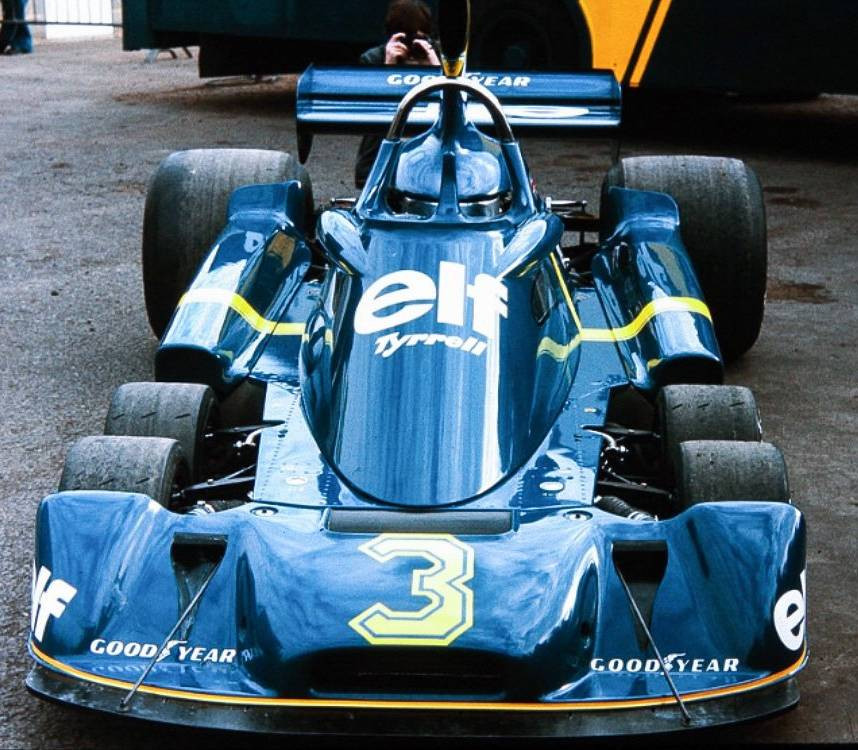 Tyrrell P34
Tyrrell P34
Formula-1 in social network X (previously Twitter)
Realization Given the general crisis of the team and the lack of other ideas, the main developer of the team – Derek Gardner – took up the work. It is worth noting that it was not the first time to create unusual cars for him – he still loved to experiment.
The first public presentation of the new car was held in September 1975 at the Hitrou London. Of course, the audience was very surprised, and some even thought they were playing. Bosses and designers of opponents were also openly capes from novelty. However, it was not a joke at all.
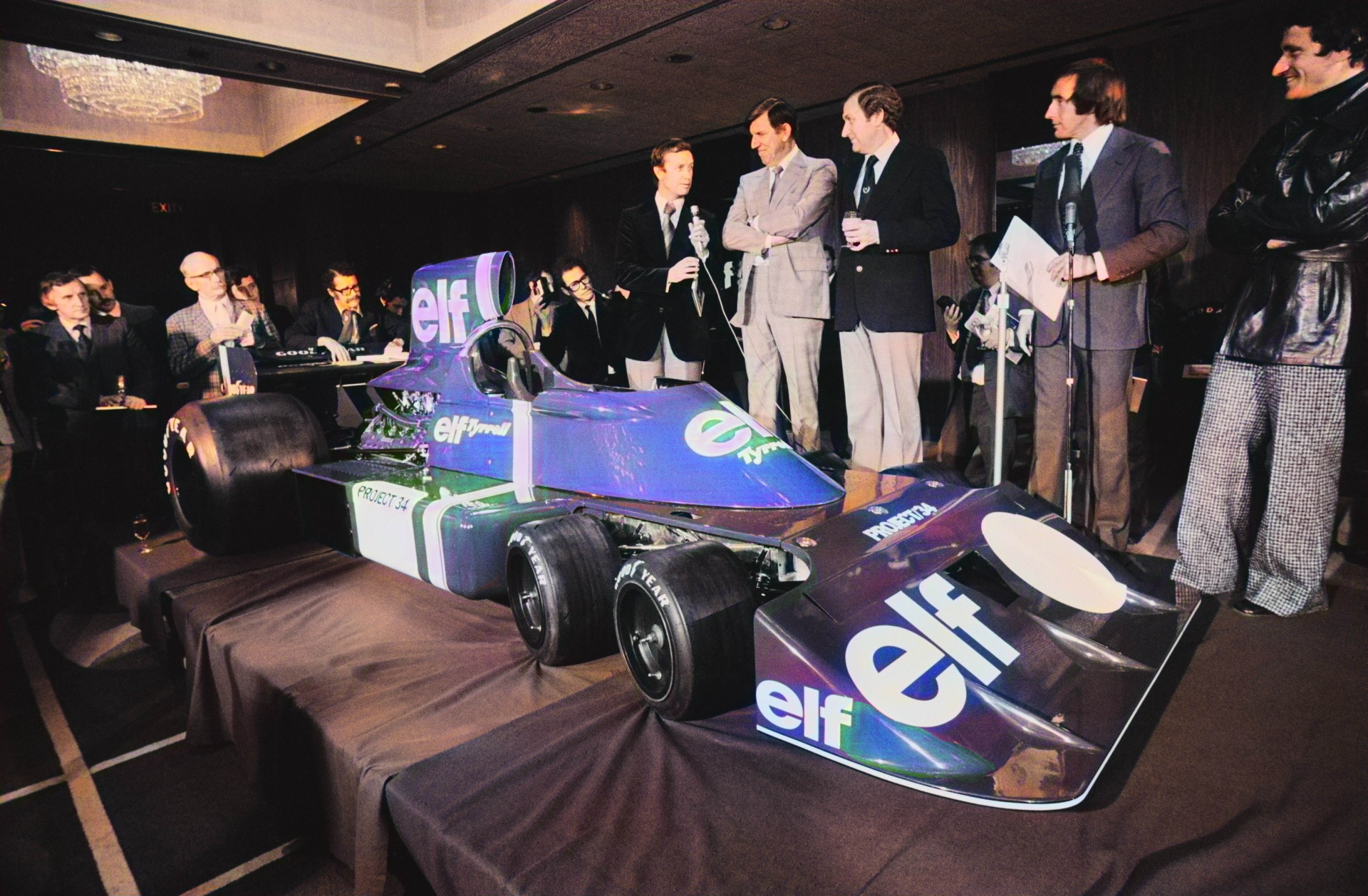 September 1975, Tyrrell P34 presentation in London
September 1975, Tyrrell P34 presentation in London
Getty Images
However, a long time has passed before the release of this engineering “Monstra”. The original version of the machine was incredibly “raw” and had many weaknesses, including problems with overheating. Refinement was needed, which lasted more than six months.
Only in the fourth stage of the 1976 season, in Spain, the second pilot of the Patrick Depayier team for the first time in the history of Formula-1, a six-wheeled car was brought to the route. And in the following races, in Belgium, at the wheel of such unusual cars were both Tirrell pilots.
Results on the track The appearance of the Tyrrell P34 can be argued endlessly: some consider it beautiful, others are ugly, and others see in it the embodiment of the same freedom of engineering thought. However, formula-1 cars are created not for beauty, but for speed. And only the racing route could answer what it was – madness or genius.
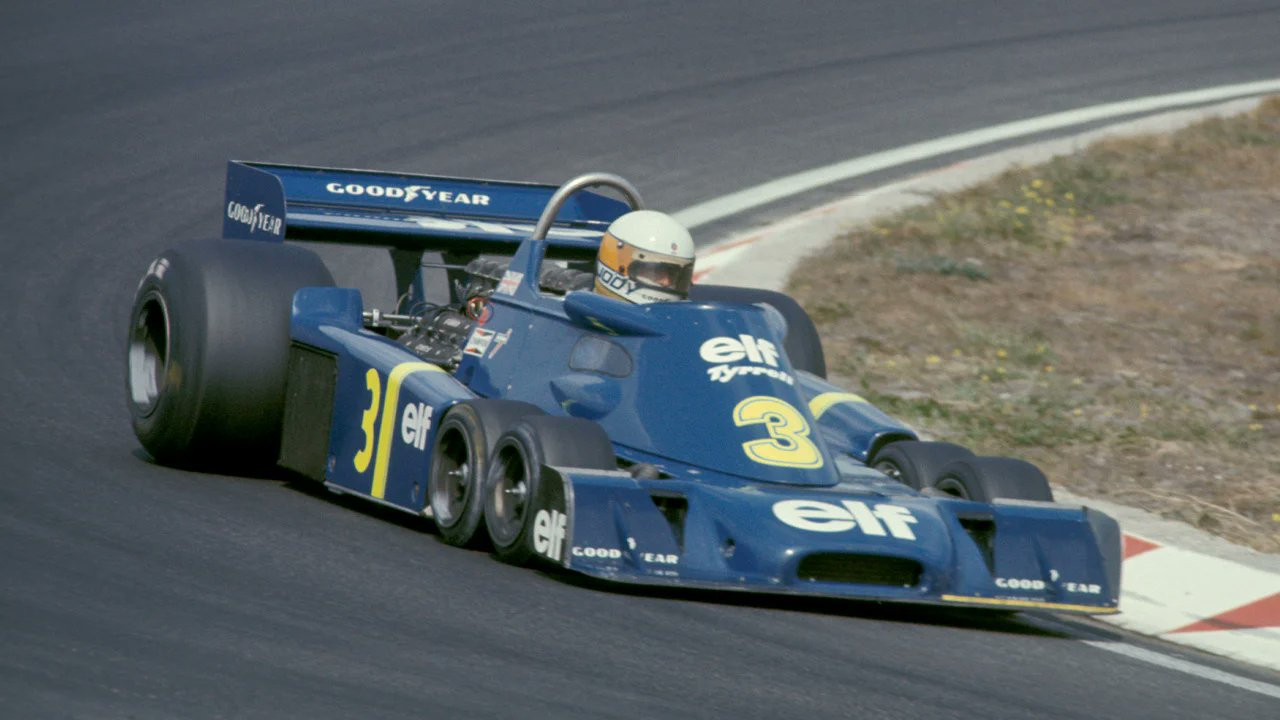 Jodi Shaketer at the wheel of Tyrrell P34
Jodi Shaketer at the wheel of Tyrrell P34
Formula-1 in social network X (previously Twitter)
In general, the debut of the six-wheeled car was quite successful: in the qualification at the Grand Prix of Spain, Patrick Depayier took third place, giving way to only the main characters of the 1976 Championship-Niki Laudi and James Hunt. In the race itself, the Frenchman was confident in the three leaders until he drove because of a collision.
In Belgium, Jodi Shekter joined Depayer, who received his own copy of a new car – and immediately finished the fourth. And on the narrow streets of Monaco, both Tirrell pilots caused a real furore, finishing the second and third, giving way to Laudi.
Sweden Grand Prix was the real star time for Tyrrell P34. Sheketer won the pole in the qualification, and Depaei took the fourth position. Mario Andretti escaped at the start of the race, but as it turned out later, he made a falsestart. The American tried to play a penalty minute, but eventually burned the engine – and thus opened the road to victory with two six -wheeled “monsters”, which at the finish was drawn up a team double: Shaketer – the first, depaye – the second.
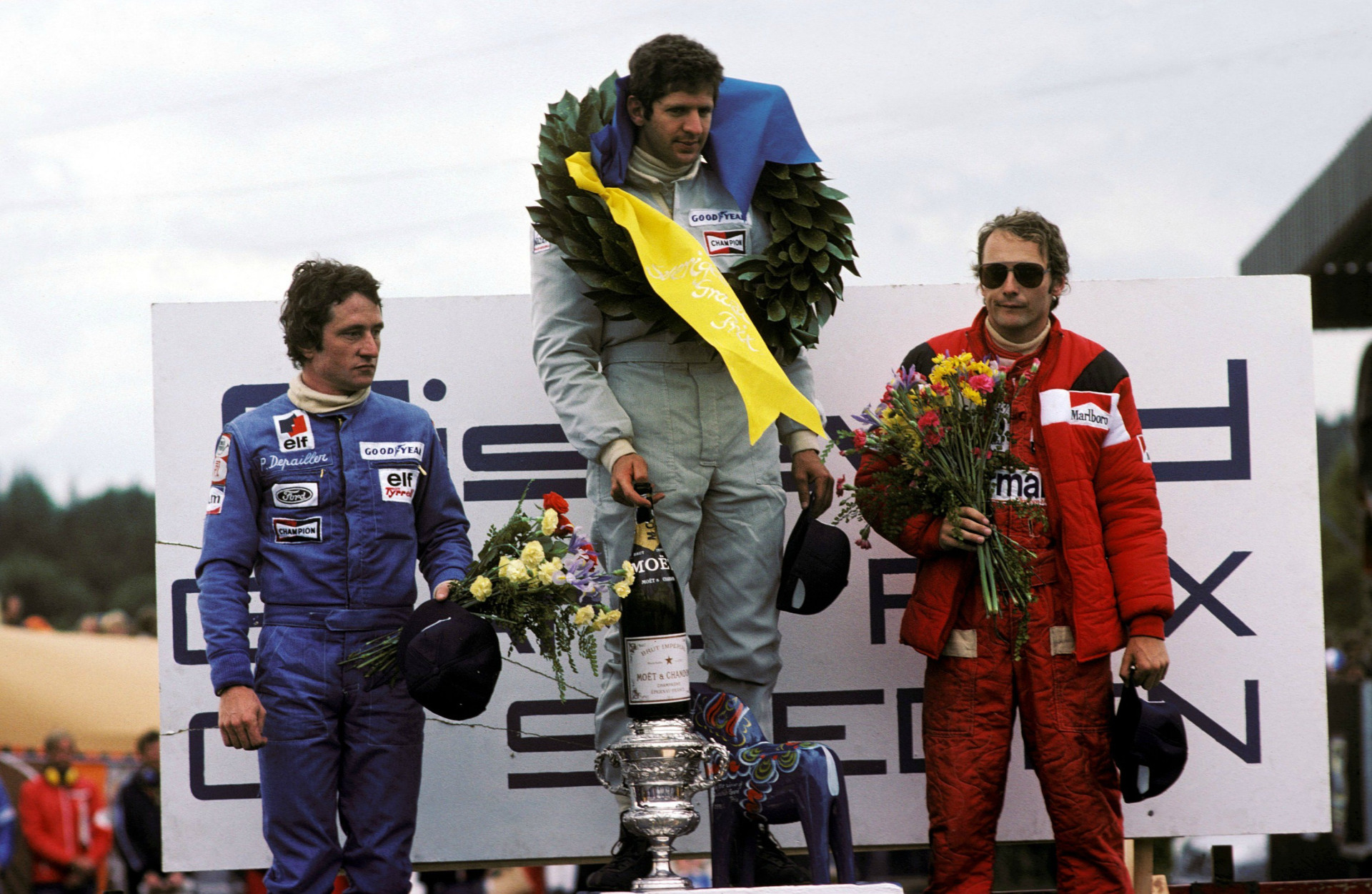 Podium Grand Prix of Sweden 1976: Patrick Depayier (2nd place), Jodi Shekter (1st place) and Niki Lauda (3rd place)
Podium Grand Prix of Sweden 1976: Patrick Depayier (2nd place), Jodi Shekter (1st place) and Niki Lauda (3rd place)
Formula-1 in social network X (previously Twitter)
Unfortunately, this triumph was the only one for these machines. However, the results in the rest of the season were still good. Another 6 times “thirty -four” came to the catwalks, every time – in second place. And as a result of the championship, Jodi Shekecker took third place, essentially becoming “the best among others” after Hunt and Lauda.
In the 1976 season, the route told her word. Of course, it was not possible to create a “self -pole”, but it is safe to say that Tyrrell P34 was more than a worthy car capable of fighting for high positions.
Tire betrayal Before the beginning of the 1977 season, the composition of the pilots took place in Tirrell: Ronny Peterson came to Sheketer. The team continued to use six -wheeled cars, but the results have deteriorated significantly – only four podiums were achieved throughout the season, and in Only ninth and fourteenth places took the personal standings.
But the reason was not in the design of the machine, but in tires. Goodyear refused to refine the 10-inch tires specifically for one team, while its main products-standard tires for the rest of the car-regularly updated and improved.
And after the end of the 1977 season, Goodyear has completely decided to stop the production of small wheels. There were attempts to negotiate with another supplier – Michelin, and the parties almost reached the previous agreement, but eventually the agreement did not take place. As a result, Tirrell was forced to return to the classic four -wheeled structure in 1978.
Heritage Even with its short history, Tyrrell P34 has firmly entered the history of Formula-1 as one of the most unique engineering creations. The victory in the race and 14 catwalks clearly confirm that this machine has rightly earned its place in the hearts of fans.
In addition to success on the highway, this design creative has become a powerful source of inspiration. Even within the formula-1 itself, several teams conducted their own developments of six-wheeled cars. The case came to the experimental samples, but none of them came to the start of the Grand Prix. The attempts lasted until 1982 until the technical regulation has finally limited the number of wheels – four.
However, in the “ordinary” life, the idea did not disappear. From time to time, enthusiasts continue to create cars and even motorcycles with a similar design. Some of them exist in a single copy, others are even produced in small series.
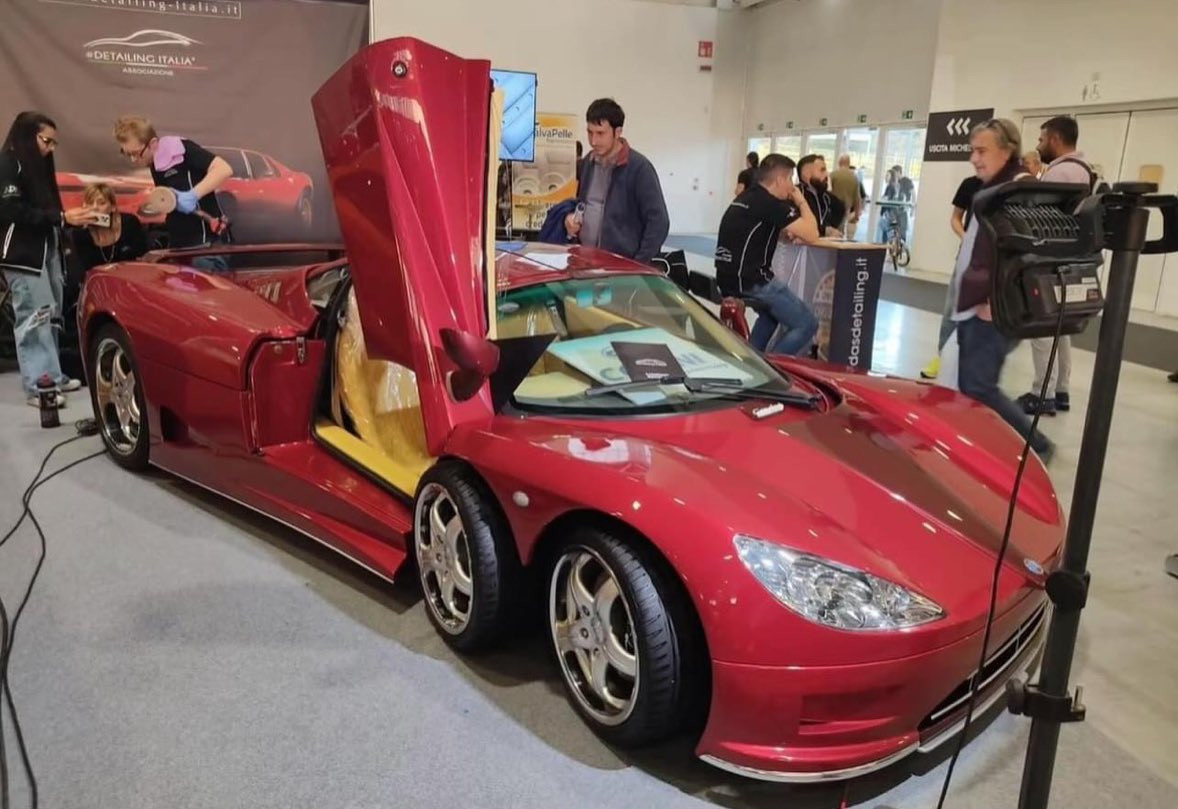 COVINI C6W sports car
COVINI C6W sports car
Rare Cars Only on the social network X (previously Twitter)
And Tyrrell p34 remained a reminder of what formula-1 can be when the engineers are given the freedom to think are unusual. It is not just a six -wheeled car – it is a symbol of the era when dreams and boldness could become part of the race reality.
”, – WRITE: Champion.com.ua
 Jodi Shaketer at the wheel of Tyrrell P34 rushes to victory at the Sweden Grand Prix of 1976
Jodi Shaketer at the wheel of Tyrrell P34 rushes to victory at the Sweden Grand Prix of 1976
Formula-1 in social network X (previously Twitter)
Nowadays, the developers of the Formula-1 are squeezed within the framework of rigid technical regulations and more similar to lawyers, who first look for “gray zones” of the rules, and then prove the legality of their decisions.
However, in the past, engineers had creative freedom and design fantasy had a place to walk. One by one, unusual cars of formula-1 appeared on the starting grille. And only speed showed which one would create a story.
Prerequisites At the end of the 1973 season, Tirrell’s championship team was left without both pilots: the legendary Jackie Stuart, while at the peak of glory, unexpectedly made a decision to end his career, and his protege François Sever, who had high hopes, tragically died in the quality of the season.

Ken Tirrell was forced to seek replacement immediately to two leaders. New pilots were Jodi Shekeke and Patrick Depayier, and Jodi soon took a leadership position. But the team, which was almost like a family, took time to get used to new faces.
The 1974 season held the team at the “acceptable” level – Shekter even claimed the title for a while. However, as early as 1975, the results worsened sharply: despite one victory, Jodi scored only 20 points and took the seventh place in his personal standings – too little for the team with the championship past.
Against the backdrop of a sports recession began to go and sponsors. Tirrell was at a crossroads – something had to be changed. It was then that the engineers had an idea that would seem madness in peaceful times, but in a crisis was perceived as a desperate chance of returning to the top.
Technical design At the dawn of formula-1, the main attention was paid to the power of the engine, the weight of the machine and mechanical grip. Aerodynamics was not seen as something serious. But when the “folk” motor of Ford Cosworth DFV, which most teams used, engineers had to look for an advantage in other design elements.
The pioneers in working with air flows became designers of the legendary lotus under the guidance of Chepman’s knee. However, all other teams began to work actively in this direction.
Tirrelli pointed out that a serious problem for aerodynamics is open wheels-a corporate feature of formula-1, which distinguishes it from most other racing series. Not only do they go beyond the borders, so they also create a lot of turns because of their rotation.
In an attempt to solve this problem and there was an unexpected idea: to significantly reduce the size of the front wheels so that they can be hidden behind the nose. And to compensate for the loss of clutch with the route, it was decided to add another front axle.
 Tyrrell P34
Tyrrell P34
Formula-1 in social network X (previously Twitter)
Realization Given the general crisis of the team and the lack of other ideas, the main developer of the team – Derek Gardner – took up the work. It is worth noting that it was not the first time to create unusual cars for him – he still loved to experiment.
The first public presentation of the new car was held in September 1975 at the Hitrou London. Of course, the audience was very surprised, and some even thought they were playing. Bosses and designers of opponents were also openly capes from novelty. However, it was not a joke at all.
 September 1975, Tyrrell P34 presentation in London
September 1975, Tyrrell P34 presentation in London
Getty Images
However, a long time has passed before the release of this engineering “Monstra”. The original version of the machine was incredibly “raw” and had many weaknesses, including problems with overheating. Refinement was needed, which lasted more than six months.
Only in the fourth stage of the 1976 season, in Spain, the second pilot of the Patrick Depayier team for the first time in the history of Formula-1, a six-wheeled car was brought to the route. And in the following races, in Belgium, at the wheel of such unusual cars were both Tirrell pilots.
Results on the track The appearance of the Tyrrell P34 can be argued endlessly: some consider it beautiful, others are ugly, and others see in it the embodiment of the same freedom of engineering thought. However, formula-1 cars are created not for beauty, but for speed. And only the racing route could answer what it was – madness or genius.
 Jodi Shaketer at the wheel of Tyrrell P34
Jodi Shaketer at the wheel of Tyrrell P34
Formula-1 in social network X (previously Twitter)
In general, the debut of the six-wheeled car was quite successful: in the qualification at the Grand Prix of Spain, Patrick Depayier took third place, only reacing a goal Aries Heroes of the 1976 Championship – Niki Laudi and James Hunt. In the race itself, the Frenchman was confident in the three leaders until he drove because of a collision.
In Belgium, Jodi Shekter joined Depayer, who received his own copy of a new car – and immediately finished the fourth. And on the narrow streets of Monaco, both Tirrell pilots caused a real furore, finishing the second and third, giving way to Laudi.
Sweden Grand Prix was the real star time for Tyrrell P34. Sheketer won the pole in the qualification, and Depaei took the fourth position. Mario Andretti escaped at the start of the race, but as it turned out later, he made a falsestart. The American tried to play a penalty minute, but eventually burned the engine – and thus opened the road to victory with two six -wheeled “monsters”, which at the finish was drawn up a team double: Shaketer – the first, depaye – the second.
 Podium Grand Prix of Sweden 1976: Patrick Depayier (2nd place), Jodi Shekter (1st place) and Niki Lauda (3rd place)
Podium Grand Prix of Sweden 1976: Patrick Depayier (2nd place), Jodi Shekter (1st place) and Niki Lauda (3rd place)
Formula-1 in social network X (previously Twitter)
Unfortunately, this triumph was the only one for these machines. However, the results in the rest of the season were still good. Another 6 times “thirty -four” came to the catwalks, every time – in second place. And as a result of the championship, Jodi Shekecker took third place, essentially becoming “the best among others” after Hunt and Lauda.
In the 1976 season, the route told her word. Of course, it was not possible to create a “self -pole”, but it is safe to say that Tyrrell P34 was more than a worthy car capable of fighting for high positions.
Tire betrayal Before the beginning of the 1977 season, the composition of the pilots took place in Tirrell: Ronny Peterson came to Sheketer. The team continued to use six -wheeled cars, but the results have deteriorated significantly – only four podiums were achieved throughout the season, and only ninth and fourteenth place took the rands in the personal standings.
But the reason was not in the design of the machine, but in tires. Goodyear refused to refine the 10-inch tires specifically for one team, while its main products-standard tires for the rest of the car-regularly updated and improved.
And after the end of the 1977 season, Goodyear has completely decided to stop the production of small wheels. There were attempts to negotiate with another supplier – Michelin, and the parties almost reached the previous agreement, but eventually the agreement did not take place. As a result, Tirrell was forced to return to the classic four -wheeled structure in 1978.
Heritage Even with its short history, Tyrrell P34 has firmly entered the history of Formula-1 as one of the most unique engineering creations. The victory in the race and 14 catwalks clearly confirm that this machine has rightly earned its place in the hearts of fans.
In addition to success on the highway, this design creative has become a powerful source of inspiration. Even within the formula-1 itself, several teams conducted their own developments of six-wheeled cars. The case came to the experimental samples, but none of them came to the start of the Grand Prix. The attempts lasted until 1982 until the technical regulation has finally limited the number of wheels – four.
However, in the “ordinary” life, the idea did not disappear. From time to time, enthusiasts continue to create cars and even motorcycles with a similar design. Some of them exist in a single copy, others are even produced in small series.
 COVINI C6W sports car
COVINI C6W sports car
Rare Cars Only on the social network X (previously Twitter)
And Tyrrell p34 remained a reminder of what formula-1 can be when the engineers are given the freedom to think are unusual. It is not just a six -wheeled car – it is a symbol of the era when dreams and boldness could become part of the race reality.
